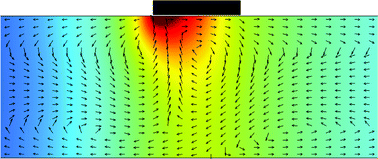Microchannel protein separation by electric field gradient focusing
Abstract
A microchannel device is presented which separates and focuses charged

* Corresponding authors
a
Department of Chemical and Nuclear Engineering, University of New Mexico, Albuquerque, New Mexico, USA
E-mail:
ssibbett@unm.edu
b Department of Chemical Engineering, Washington State University, Pullman, Washington, USA
c Intel Corporation, Rio Rancho, New Mexico, USA
A microchannel device is presented which separates and focuses charged

 Please wait while we load your content...
Something went wrong. Try again?
Please wait while we load your content...
Something went wrong. Try again?
D. N. Petsev, G. P. Lopez, C. F. Ivory and S. S. Sibbett, Lab Chip, 2005, 5, 587 DOI: 10.1039/B501538C
To request permission to reproduce material from this article, please go to the Copyright Clearance Center request page.
If you are an author contributing to an RSC publication, you do not need to request permission provided correct acknowledgement is given.
If you are the author of this article, you do not need to request permission to reproduce figures and diagrams provided correct acknowledgement is given. If you want to reproduce the whole article in a third-party publication (excluding your thesis/dissertation for which permission is not required) please go to the Copyright Clearance Center request page.
Read more about how to correctly acknowledge RSC content.
 Fetching data from CrossRef.
Fetching data from CrossRef.
This may take some time to load.
Loading related content
